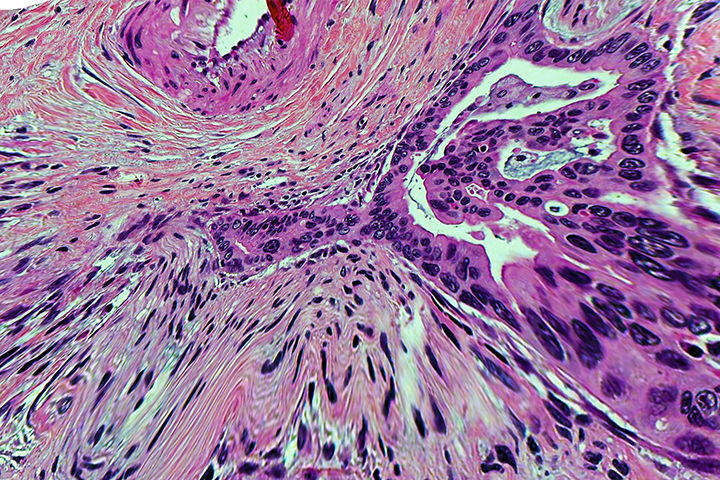Tumor Staging and Pancreatic Cancer

Pancreatic cancer often comes on subtly.
Since the pancreas lies deep inside the body, it can be tough for patients, and their doctors, to feel or see tumors growing. By the time patients notice symptoms—stomach pain, jaundice, loss of appetite—the cancer has usually reached a more advanced stage.”With pancreatic cancer, outcomes largely depend on whether the cancer can be surgically removed or not, more than the stage of disease,” says Shubham Pant, M.D., a gastrointestinal oncologist at MD Anderson Cancer Center in Houston, Texas. But that doesn’t mean staging isn’t relevant.
Staging Explained
Doctors use the term “stage” to describe whether or not the cancer has spread—and if it has, how much. The earliest stage of pancreatic cancer is stage 0, or carcinoma in situ. By their nature, these tumors are more amenable to treatment, while later-stage cancers are more challenging to treat.To determine staging, doctors typically look at three factors:
- The extent of the tumor: How big is the tumor and does it extend beyond the pancreas and affect nearby blood vessels?
- Spread to lymph nodes: Are there signs of cancer in the nearby lymph nodes? If so, how many of the lymph nodes have cancer?
- Spread to other organs: Has the cancer spread to distant lymph nodes and other organs?
Stages 0 to 4 fall into these basic categories:
- Stage 0: With stage 0 cancer, also called carcinoma in situ, abnormal cells are confined to the lining of the pancreas. These cells have the potential to become cancer.
- Stage I: Stage I disease describes a cancer that has formed in the pancreas. Stage I disease is further classified as stage IA and stage IB based on size. Stage IA disease is 2 centimeters or less while stage IB is larger than 2 centimeters.
- Stage II: Stage II disease includes cancers that have spread to the lymph nodes. Disease that is defined as stage IIA is larger than 4 centimeters. Stage IIB disease indicates the cancer has spread to nearby lymph nodes.
- Stage III: With stage III disease, the cancer has spread not only to four or more nearby lymph nodes, but also to the major blood vessels near the tumor.
- Stage IV: Stage IV disease means the cancer has spread to distant organs, such as the liver, lungs, and peritoneal cavity.
What Is Tumor Grading?
Grades are important, too, and they reflect how abnormal cells look under a microscope. Like stages, grade levels range between 1 and 4. Higher grade cancers are more aggressive and more likely to grow and spread to other tissues. These cells look highly abnormal under a microscope. Low grade cancers, on the other hand, are more likely to remain localized. In fact, grade 1 cancers look almost like normal cells under a microscope.
How Doctors Determine Stage
To confirm the diagnosis and determine a patient’s stage of disease, doctors rely on a variety of tests to determine whether surgical resection is an option. Common tests include:
- Imaging: Imaging tests provide doctors with visual information about the pancreas, the cancer and the surrounding tissues. To get the clearest picture, doctors use a variety of tests, such as CT scans, MRIs, and endoscopic ultrasounds.
- Biopsy: The only way to know for sure whether or not a mass is cancerous is to take a sample of the tissue and study it under a microscope. Doctors can retrieve tissue samples during surgery, or as part of certain imaging tests, such as endoscopic retrograde cholangiopancreatography, or ERCP.
- Blood Tests: While lab tests are usually not important for staging, they can help guide treatment decisions. High levels of tumor markers, such as CA 19-9, may indicate cancer. Similarly, tumors that are blocking the bile duct can produce higher than normal levels of bilirubin and liver enzymes in the blood.
Comprehensive Care for Every Stage
While the stage of disease is important, every case of pancreatic cancer is unique. Some patients will be eligible for surgery without systemic treatment while others will undergo chemotherapy to shrink their tumors so they’re eligible for surgery.
This functional staging system is part of how doctors determine pancreatic cancer treatment, including surgery. And in every case, it’s important for patients to know their options.
“Patients who have pancreatic cancer really need to seek treatment from a high-volume center,” Pant says. “That way, they have access to a multidisciplinary team of experts to help guide them through often difficult treatment decisions.”






